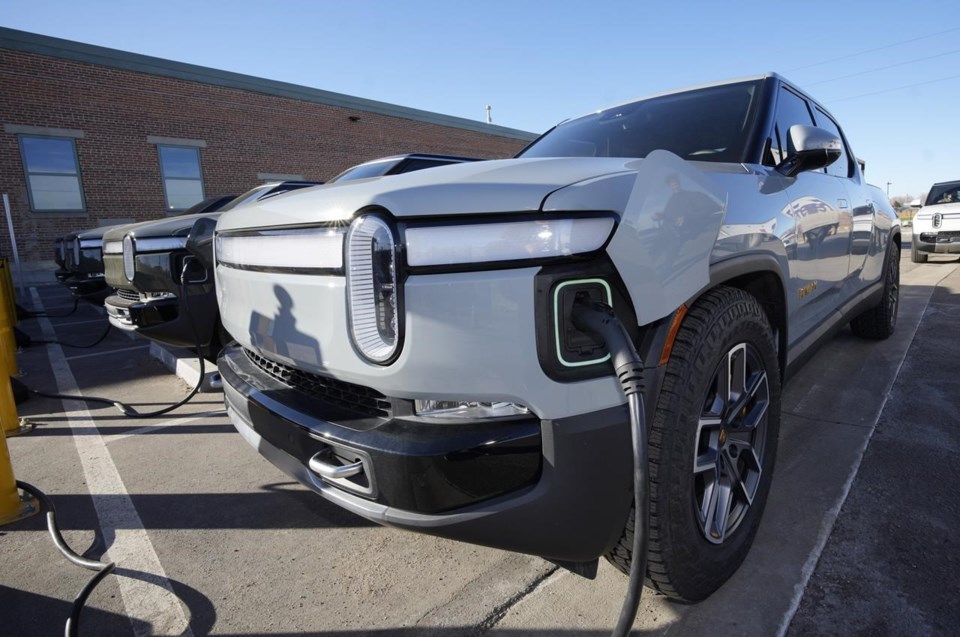WASHINGTON (AP) — The U.S. economy slowed sharply from January through March, decelerating to just a 1.1% annual pace as higher interest rates hammered the housing market and businesses reduced their inventories.
Thursday’s estimate from the Commerce Department showed that the nation’s gross domestic product — the broadest gauge of economic output — weakened after growing 3.2% from July through September and 2.6% from October through December.
But consumer spending, which accounts for about 70% of U.S. economic activity, remained resilient, growing at a 3.7% annual pace, the fastest such rate in nearly two years. Spending on goods, in particular, was solid: It rose at its fastest pace since the second quarter of 2021.
Economists had been expecting overall GDP to grow at a 1.9% pace in the January-March quarter. Behind much of the quarter's weakness was a sharp reduction in business inventories, which subtracted roughly 2.3 percentage points from overall growth. Companies typically slash their inventories when they anticipate a coming downturn.
The economy's slowdown reflects the impact of the Federal Reserve’s aggressive drive to tame inflation, with nine interest rate hikes over the past year. The surge in borrowing costs is expected to send the economy into a recession sometime this year. Though inflation has steadily eased from the four-decade high it reached last year, it remains far above the Fed’s 2% target.
The housing market, which is especially vulnerable to higher loan rates, has been battered. And many banks have tightened their lending standards since the failure last month of two major U.S. banks, making it even harder to borrow to buy a house or a car or to expand a business.
“The economy had less forward momentum at the start of this year than previously thought," Andrew Hunter of Capital Economics wrote in a research note. “We continue to expect the drag from higher interest rates and tightening credit conditions to push the economy into a mild recession soon.″
Many economists say the cumulative impact of the Fed’s rate hikes has yet to be fully felt. Still, the central bank’s policymakers are aiming for a so-called soft landing: Cooling growth enough to curb inflation yet not so much as to send the world’s largest economy tumbling into a recession.
There is widespread skepticism that the Fed will succeed. An economic model used by the Conference Board, a business research group, puts the probability of a U.S. recession over the next year at 99%.
The Conference Board’s recession-probability gauge had hung around zero from September 2020, as the economy rebounded explosively from the COVID-19 recession, until March 2022, when the Fed started raising rates to fight inflation.
Thursday’s GDP report was the first of three estimates the Commerce Department will make of growth in the January-March quarter. Economists expect growth to further weaken in the current April-June quarter — to just a 0.3% annual pace, according to the latest survey by the data firm FactSet.
A key question is whether — and by how much — consumer spending will weaken. Retail sales had enjoyed a strong start in January, aided by warmer-than-expected weather and bigger Social Security checks. But in February and again in March, retail sales tumbled, suggesting that consumers were tiring as the first quarter of the year came to an end.
Even so, some economists were impressed that spending has held up as well as it has even after nine Fed rate hikes have led to higher costs for loans ranging from mortgages and auto purchases to credit cards and corporate borrowing.
“The focus is on the weak top-line (GDP) number, but the economy remains resilient,’’ said Robert Frick, an economist at Navy Federal Credit Union. “Businesses have underestimated both consumer buying and business buying.”
The worst fears of a 2008-style financial crisis have eased over the past month. But lingering credit cutbacks, which were mentioned in the Fed’s survey this month of regional economies, is likely to hobble growth.
Political risks are growing, too. Congressional Republicans are threatening to let the federal government default on its debts, by refusing to raise the statutory limit on what it can borrow, if Democrats and President Joe Biden fail to agree to spending restrictions and cuts. A first-ever default on the federal debt would shatter the market for U.S. Treasurys — the world’s biggest — and possibly cause a global financial crisis.
The global backdrop is also looking bleaker. The International Monetary Fund this month downgraded its forecast for worldwide economic growth, citing rising interest rates around the world, financial uncertainty and chronic inflation. American exporters could suffer as a consequence.
Still, the U.S. economy has surprised before. Recession fears rose early last year after GDP had shrunk for two straight quarters. But the economy roared back in the second half of 2022, powered by surprisingly sturdy consumer spending.
A strong job market has given Americans the confidence and financial wherewithal to keep shopping: 2021 and 2022 were the two best years for job creation on record. And hiring has remained strong so far this year, though it has decelerated from January to February and then to March.
The jobs report for April, which the government will issue on May 5, is expected to show that employers added a decent but still-lower total of 185,000 jobs this month, according to a survey of forecasters by FactSet.
Paul Wiseman, The Associated Press




